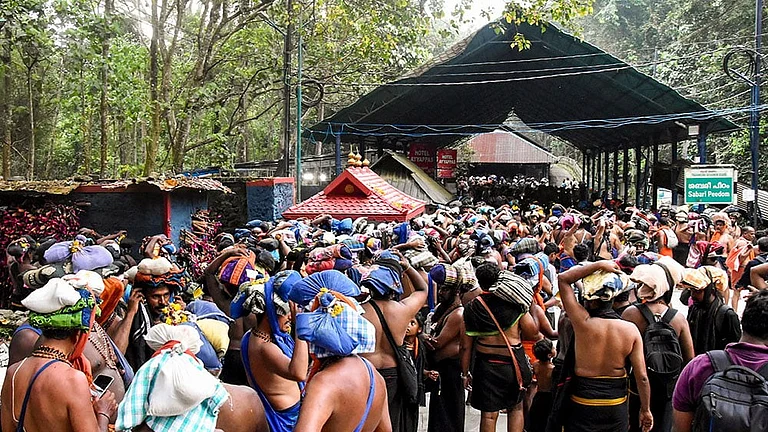The seasonal diversity of the Kashmir region is one of the most exclusive ones across the globe. No season matches the other and each one is entirely distant from the other. The structured seasons of winter, spring, summer and autumn each get their turn to sprinkle the colour and magic of their originality for a satisfiable spell of time. Each day from each season has an effect on an average Kashmiri which is unique and distinct. The growth of the persona is carved by the changing nature of the seasons and each Kashmiri evolves through the challenges and uncertainties by a steady resilience against the complexities of the region along with the hope sustained and flourished by the seasonal transpose.
The month of February is the most hopeful month of all the times. Daffodils have always been the knelling vibes of the arriving spring in Kashmir. The first place from where the Daffodils bloom is the graveyards of the region. Whether this is because each Kashmiri has a blooming heart dead or alive, or it is because the departed have barely got a chance to bloom in person, is not known! The Daffodils are followed by cherries. The prettiness to eyes is followed by sweetness to the tongue. The gates to the Badaem-Vaer are pushed open and families in flocks holding the Kaani-Baskets celebrate Noon-Chai with Girdas, Bakir-Khanis, Kulchas and Shirmaal. The unbloomed hearts of the people who haven’t got any durable opportunity to witness peace and stability march forth to find some timely solace in the blooming almond trees. The days get longer and fragrant by the day. The spring fruits steadily begin to ripe and the sun gets sturdier. The colours of the Tulip Garden call everyone and groups of friends and soulful couples march past the flowers…
The enlarged days pave way for the trail of summer; slow and steady, flower by flower and vegetable by vegetable. The summer in Kashmir kinks the torch of hope lit by the spring brighter. People with all their hearts believe in the happening of better things. Lighter garments in infinite shades adorn the bodies of tall fair Kashmiris. The colourful Dupattas and contrasted dresses are stitched by the tailors through the lengths and breadths of the region. The rivers and brooks swell and sway, calling people to witness the depths of local Mother Nature from all the corners of the valley. There is practically no Kashmiri who doesn’t visit Pahalgam and Sonmarg at least two to three times a summer. The locally grown vegetables are spiced and served with mutton and chicken and each household enjoys the delicacies with rice, twice a day. The peak marriage season in urban Kashmir falls throughout the summer. Posh and lavish weddings are a major part of Kashmiri culture. The bride is adorned in gold and diamonds and the guests are fed by Kehwa and Wazwan. And no one misses a summer Shikara ride and a treat of Kashmir styled barbeque afterwards.
The bountiful horticulture production of the region begins to lush as August ends. The hope held high by the summer is consolidated in the gold shade of Kashmir. The fragrance of the ripened fruits sings the arrival of autumn across the extents of the region. Uncounted varieties of apple ripen from August through November. The Chinars metamorphosise from green; through golden to leafless! The first serious meal of Trout fish is cooked together with the fresh Nadroo, feasting the young and old of the household. The tall trees of Walnut brim in the fruit and every Kashmiri tastes the magic of white walnut. The ladies of the household secure as much possible quantities of this dry-fruit for winters and cuisines and chutneys in particular. ‘Rice the staple’ from the previous year is bleached, cleaned and filled in the traditional vessels to last throughout the winter. And the new rice is stored with hay for the distant winter to come.
The closure of autumn in the rural Kashmir is signed off by the conclusion of weddings adorned by women wearing the most colourful solid block dresses and singing the most adorable traditional wedding songs. The urban autumns are smelled in and internalised by walks in the Shalimar Garden over the crispy Chinar leaves and welcomed by the young in the Naseem Bagh of Kashmir University by sipping the chai from the Dabba. But then the air has an underlined elegy of dying moon and barren land just coming the way of each person in the land…
The cold sun, brown soil and barren branches combined with the full hearts and full go-downs paint a portrait of resilience over the plain emotionless sky. At the same time, everyone in their own capacity prepares for the winter, emotionally and practically; which has always been feeling long! The women store all sorts of foods including; dried vegetables, dry fruits, rice and lentils among many other uncountable things. The Kangri fire-pots are kept ready with big bags of charcoal in reserve. Firewood is stored in garages for the Hamam’s to host the members of the family spreading both literal and metaphoric warmth. As winter deepens, people get dressed in heavy clothes and to make room for Kangirs closer to their body, Pherans are worn.
The length of winter sums up a major part of the history and circumstances of the region. As soon the snow starts falling, people enter their well-built homes, their safe abodes and friends of the hard-tough-challenging times. There is absolutely no Kashmiri who doesn’t have a minimum of two well-constructed, well-insulated rooms to survive through the winter. As the snow accumulates, people keep themselves warm in Hamams and through Kangris, snacking on walnuts and Halwa.
And thus each year, an average Kashmiri lives a diverse life, growing and surviving through each phase yet returning back to the same… There is a very famous phrase that reads ‘Kujah Kasheer’ (Mehak, 2022). A(ny) Kashmiri who lives outside Kashmir always has a deep longing for each of the things mentioned throughout the write-up. And the eventual end in majority of the cases is a return to the land of roots and growth through the well-structured satisfying seasons of the soil..
(The author teaches Economics at the IUST University Kashmir and has been growing through the seasons of Kashmir steadily over time)

























